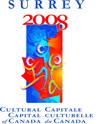Can you reflect how working on the Glocal project changed your photo practice?
Artist response: Twy Miller, May 2008
In creating the series
Cat’s Eye View - it is critical to remember images never tell the truth. Despite the camera’s ability, be it film or digital, to capture more than minds can record, it is still only from the perspective of the camera, or the individual wielding the camera. Images carry the intellectual and cultural load of the photographer, whose responsibility is to step outside of boundaries and prejudices, to seek out those things of difference that convey to the viewer not only one’s personal perspective, but throw new seeds of inquiry onto fresh palates.
Differing perspectives requires a shift in thought; a useful tool in most disciplines where it is necessary to take another’s paws and appreciate a new intellectual process. In this instance a house cat is followed for a day and a night (vis a vis a hand controlled radio car and sometimes myself on my hands and knee.)
The angle from which the cat views the world is shown to be markedly different from our human view. Areas which are normally off limits to large limbed bodies become no more than roadways and tunnels, vantage points are examined from which the outside territory is kept under scrutiny, and there is the supremely important moment of mealtime. As cats do not experience colour vision, this sequence was photographed in black and white; adding another level of interpretation.
Choosing a new perspective leads to new initiatives, which in turn informs the photographer of further paths to walk and tunnels to scrutinize. While we have the choice of black and white or colour, we also have the path of what do we depict and how. Glocal has changed my mind's eye.

Artist Response: Peter Stephenson, May 2008
Northern Ireland
In creating this series of photographs, my aim was to challenge perspective and notions of movement. The premise for this series of images was to depicting a walk along the beach. To record these images from an alternate perspective, my mobile phone was taped to the my ankle and images were recorded as I walked along a beach at Hazelbank Park towards the sea.
For me this was purely experimental photography, which took inspiration from Maya Deren’s alternate perspectives in ‘Meshes of the Afternoon’ (1943). This project is open to future development and using more advance mobile telephone equipment would allow for a better quality of images.






















































